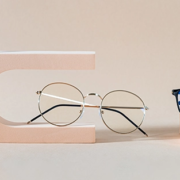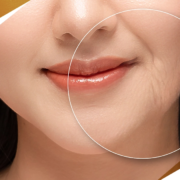Fascinating Facts You Probably Never Knew About Your Skin
Your skin is your body’s largest organ, but how much do you know about the role it plays in your health?
It actually does a big job for you. In fact, each inch of skin is made up of 19 million skin cells, 650 sweat glands, 20 blood vessels, and 1,000 nerve endings.
The skin is the body’s largest organ. It’s our first line of defense against the outside world, including irritants and allergens.
More than a protective organ, your skin functions as an immune organ. Specialized immune cells live in the skin and recognize intruding organisms and substances. They send out messages to stimulate a fighter response or allergic response by recruiting specialized white blood cells from blood vessels in the skin.
All that is to say, respecting this important organ with smart skin-care habits can help keep you healthy — and, yes, even smooth fine lines and wrinkles, and lessen discoloration. Knowing these cool facts will help you care for your skin as best you can:
- Skin Plays an Important Role in Regulating Your Body Temperature
Not only does your skin play a role in your immune function but it also acts as a personal thermostat through a process known as thermoregulation.
Sweating is a bodily function that helps regulate your body temperature. ormal sweating can be as much as a quart of fluid per day. In fact, your skin likely has anywhere between two and four million sweat glands.
Sweating isn’t your body’s only way of keeping you cool, though. When you’re especially warm, your skin helps cool you down via vasodilation. Per research, vasodilation occurs when blood vessels just below the surface of the skin dilate, allowing for increased blood flow and heat dissipation.
- Your Skin Renews Itself Every 28 Days
The epidermis is the thin outer layer of your skin, which contains dead skin cells. It’s this epidermis that turns over every 28 days.
Another way to put it is that as skin cells generate at the bottom of the epidermis, it takes them about a month to reach the surface as dead cells naturally slough off. Even when you sleep, Mother Nature is doing her job by making sure your skin exfoliates itself.
You can also help clear these dead cells away and keep your skin looking bright by exfoliating your skin regularly. Opt for either a physical exfoliator, which physically clears dead skin cells and other impurities from your skin, or a chemical exfoliator, which uses a mild acid to dissolve these dead cells.
- Your Skin Can Respond Negatively to Stress, Just Like Your Mind
While it’s unlikely you can blame a newly developed zit on the traffic jam you were caught in this morning, your skin feels your emotions, too.
Stress triggers a high level of cortisol and inflammatory molecules called cytokines that spread throughout the body.
This can lead to a rise in inflammatory markers that trigger matrix metalloproteinases, enzymes that break down collagen molecules in skin, he explains. Collagen is a protein that gives skin its youthful, bouncy elasticity.
Major illnesses or events have the power to trigger the chronic stress that would affect skin.
- Changes in Your Skin Can Reflect Underlying Health Issues
Stress isn’t the only thing that can trigger a response from your skin. Many conditions and infections can cause changes in your skin, whether they take the form of a rash, hives, itching, redness, or swelling.
Adult acne can occur due to fluctuating hormone levels, which could indicate pregnancy, perimenopause, or menopause, but acne can also indicate a hormonal disorder such as polycystic ovary syndrome.
Skin disorders can be caused by a number of conditions as you age, including heart disease, diabetes, liver disease, obesity, and nutritional deficiencies, to name just a few.
While a change in your skin is not always indicative of a larger problem, it’s best to discuss any sudden or unexpected changes in your skin with a doctor to determine whether you may have an underlying health issue to be addressed.
- Thick Skin Sometimes Serves a Purpose
Trouble spots on your skin may seem like an inconvenience, but they may have a reason for being. The bottoms of your feet and heels may be made up of thicker skin (that you desperately try to get rid of via a pedicure), but that’s evolution at work, protecting you while you walk.
Areas like the elbows are a different story. Elbows tend to get thicker over the years because we lean on them — it’s a reactive response from the constant friction.
For these areas, use a moisturizer that has a chemical peel ingredient, like lactic acid, to break down this thick skin.
Don’t experiment on your skincare, make sure you’re doing it the right way. Consult our dermatologists at Shinagawa Aesthetics!
Call our Patient Care Lines: (+632) 7-368 5238 l (+63) 917 862 7454 l (+63) 921 217 0517 for inquiries, questions, and appointments or talk to our consultants via LiveChat at https://shinagawa.ph so we can address and answer them for you.






